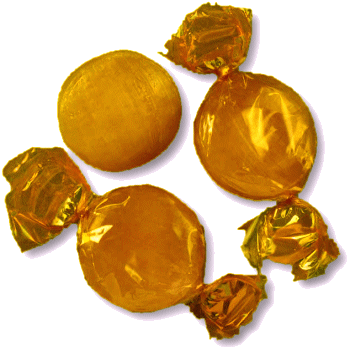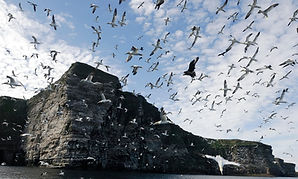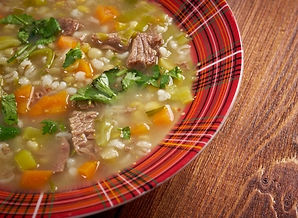



WELCOME TO AN ENTERTAINMENT SITE FOR SCOTTISH COUNTRY DANCERS!
Enjoy this curated selection of theme-related dances for celebrations and holidays, or find a dance associated with a special calendar day, or EVEN your own birthday!

Above: Unknown artist, Robert Burns in a Drawing Room
Supper
Enjoy a wonderful repast of traditional Burns' Night and other classic Scottish sweets and savories below, all in Scottish Dance form!
Toast the lads and lassies, and see if you can identify the food items on the table before "mousing-over" the item with your cursor for its name Or use the dance "menus" at the bottom of the page for hints.







 |
|---|
 |
 |
 |
 |
 |
 |
 |

 |
|---|
 |
 |
 |
 |
 |
 |
 |

Selected Dances
(click for more holiday folklore and background information)
Helen's Shortbread
Shortbread Day
Yum! Yum! Got a favourite, secret, or family shortbread recipe? Or perhaps you prefer your shortbread in fingers, petticoat tails, rounds, decoratively molded or just rustically sliced ... shortbread is worth breaking those New Year's Resolutions! As we all know, "shortbread calories don’t count if they’re followed by a reel.” 🤪
This dance was devised by the fortunate recipients of a most enviable gift: shortbread from a generous dancer/baker named Helen! As the devisor explains, “The Otto family has five members, and for many years Helen has marked each of our birthdays with a batch of her marvelous shortbread. At Christmas, her shortbread is a highlight among the many baked delights she includes in our family gift package. Yum.” Several years ago, the family presented Helen with a circular wooden shortbread mold—and ever since, her shortbread gifts have arrived in perfect rounds!
Shape aside, true Scottish shortbread begins with just four ingredients: butter, salt, sugar, and flour. Adventurous bakers and top chefs may add modern flourishes—browning the butter, toasting the sugar, slipping in a little cornstarch, or lining the pan with a generous sprinkle of Demerara sugar for a delightfully crunchy finish. For traditional and regional variations, however, look to the dance description and the included recipes for Pitcaithly Bannock (with almonds, caraway seeds, and crystallized orange) or Yetholm Bannock (featuring chopped ginger)!
One final warning: you may want to wipe those buttery hands before taking the floor! 🤪 💛 🧡 💛 🧈 🧈 🧈 👨🍳
The Foula Reel
Bird Day
The island of Foula, part of the Shetland archipelago of islands, is one of the United Kingdom’s most remote permanently inhabited islands and named from the Old Norse Fugla-ey, meaning "Bird island." Seabirds and moorland birds, including 'Bonxies' – the Shetland dialect name for the Great Skua – as well as Puffins, Kittiwakes, Guillemots, Arctic terns, red-throated divers, Fulmars, amongst others, inhabit the sandstone cliffs and open moorland. Foula remained on the Julian calendar when the rest of the Kingdom of Great Britain adopted the Gregorian calendar in 1752, keeping 1800 as a leap year, but not observing leap year in 1900. As a result, Foula is now one day ahead of the Julian calendar and 12 days behind the Gregorian, observing Christmas Day on the 6th of January and New Year's Day on the 13th! The traditional fishing grounds for fishermen from the isle of Papa Stour (lying roughly a mile off the west coast of Shetland) lay way off into the Atlantic. The fishermen would row west to the point where the cliffs of Foula would disappear into the horizon . This was "Rowing Foula down." 🦅 🦆 🐦
Sandy's Scotch Broth
Homemade Soup Day
What could be better in wintry weather than soup warming soup and a dance to go with it! This traditional farmhouse soup, gained art-world notoriety during the 1960's Pop Art movement though American artist Andy Warhol’s Campbell’s Soup can series! Scotch Broth is featured in his second portfolio of soup can prints from 1968-69. In a bit of art world thievery, in 2016, some of the soup can art prints were stolen from the Springfield Art Museum in Missouri where the original works reside. According to art insurers, 'Tomato Soup' is the most expensive and sought-after by collectors with 'Chicken Noodle' running a close second. The stolen prints included the prints of the Beef, Vegetable, Tomato, Onion, Green Pea, Chicken noodle and Black Bean soup cans. Fortunately, Scotch Broth was not in this set! Lamb, barley, and root vegetables .... ‘Mmm, mmm, good!’ Recipe included! 🍲
Atholl Brose
Liqueur Day
The brew is first recorded in 1475 during the campaign of the Earl of Atholl to capture Iain MacDonald, Lord of the Isles who was leading a rebellion against the king. Hearing that MacDonald drank from a small well, the Earl ordered it to be filled with honey, whisky and oatmeal. Allegedly, MacDonald stayed sampling the delicious concoction and was captured!
Mrs. Lambert's Black Bun
Hogmanay
Originally enjoyed on Christmas and Twelfth Night, Black Bun is now consumed year round, but most traditionally on Hogmanay Night. The great Scottish folklorist F. Marian McNeill writes: “Black bun is the old Scottish Twelfth Night Cake which was transferred to Hogmanay after the banning of Christmas and its subsidiary festival, Uphalieday, or Twelfth Night, by the Reformers.” So, enjoy your fierce raisin devils and gay currant sprites with impunity - recipe included!
Petticoat Tails
Shortbread Day
Shortbread was an expensive luxury in times past and for ordinary people, usually reserved for special occasions such as weddings, Christmas and New Year celebrations. In Shetland it was traditional to break a decorated shortbread cake over the head of a new bride on the threshold of her new home! Although shortbread fingers and petticoat tails are the most common baking shapes, Walker's Shortbread, one of the most easily recognizable brands, sometimes creates special edition shapes, such as camels!
Oxtail Soup
Homemade Soup Day
Warm up your beginning dance class with a simple and easy to learn reel full of 'O's and 'X's figures, not to mention a long cast for "tail" named for this most humble of soup recipes! As an added bonus, February is definitely the month for X's and O's!
That hearty concoction between a soup and stew, oxtail soup (often using the tail end of beef, not ox) has been a beloved staple across various cultures for centuries. In the United Kingdom, since the 18th century, folks have savored its thick, gravy-like richness, often pairing it with crusty bread on chilly days. Meanwhile, in the American South, an oxtail soup tracing its roots back to the pre-revolutionary era has been cherished for its deep, comforting flavors. Across the globe, countries like Korea, China, and Indonesia have their own cherished versions, each adding unique local ingredients and spices to this timeless dish. Whether it's the Creole-style tomato-based version with potatoes and green beans or the Indonesian 'sop buntut' featuring fried or grilled oxtail, this soup showcases the universal appeal of turning humble ingredients into soul-warming meals! Dance description and Scottish recipe version included!❤️ ❌ ⭕ ❌ 🕺 💃 🍲 🧅 🥕 🌿 🥦
Bannocks and Brose
Pancake Day
Time to bake those bannocks, even a basketful! And while you're at it, time to make a fortune-telling bannock! Shrove Tuesday (also referred to as Pancake Day or Pancake Tuesday) is known in Scotland as Bannock Night, a moveable feast day preceding Ash Wednesday (the first day of Lent), and often celebrated by consuming pancakes, griddle cakes, and bannocks! Shrove Tuesday was the last opportunity to use up eggs and fats before embarking on the Lenten fast, The Scots version of Lenten bannocks is made with oatmeal, eggs, milk or beef stock and cooked on a girdle (griddle). Milk-brose or gruel was often served to eat with the bannocks, leading to other names for this day such as Brose Day (Brosie), or Milk-Gruel Night! For fortune-telling fun, family members would participate in making a special "sooty bannock". Ritual batter pouring involved one person to pour the batter onto the griddle, another to turn the pancake, and a third to remove it when it was cooked, handing them round the assembled company. When the bowl of batter was almost empty, a small quantity of soot was aded to the mixture to make a large dark bannock, also known as the "dreaming bannock." The sooty bannock would fill the whole girdle and symbolic charms could be dropped into it: a button (bachelor); a ring (married); thimble (old maid); farthing (widow); scrap of material (tailor); straw (farmer). Once turned and cooked through, the sooty bannock was cut into bits and put into the baker's apron for everyone to draw a piece to learn their fortune! At the end of the evening, a piece of the sooty bannock could be put inside a sock and placed under pillows where the dreamer hoped to dream of their future partner! This tasty jig contains plenty of turns and circles reminiscent of batter mixing and sizziling girdles! 🥞 🥞 🥞
Brochan Lom
World Porridge Day
Gaelic for a smooth, thin, porridge, "brochan lom", is a traditional way to start the day! The Scots have long held their porridge in high regard, not just as a food but as a symbol of their endurance and strength. There's even a famous anecdote about it. When the great English lexicographer Samuel Johnson once boasted to his Scottish friend James Boswell, "In England, we wouldn't think of eating oats. We only feed them to horses," Boswell, quick-witted as always, replied with a smile, "Well, perhaps that's why in England you have better horses, and in Scotland, we have better men." So, whether you're practicing your highland setting steps or working to perfect your strathspey steps, dance to this traditional tune, written at a teacher's workshop in 1970, inspired by the namesake tune, a prime example of the "Highland tempo"! And don't forget to set out those steel-cut or pinhead oats to soak overnight for tomorrow's breakfast and find that spurtle! 🤎 🥄 🥣 🥣 🥣
Shortbread Fingers
Shortbread Day
Regardless of shape, Scottish shortbread starts with just four ingredients: butter, salt, sugar, and flour. Intrepid bakers and top chefs have added modern touches such as browning the butter; toasting the sugar; adding cornstarch; and coating the baking pan with a generous layer of Demerara sugar to give the shortbread a nice granular topping. But for traditional and regional shortbread variations, try a recipe for Pitcaithly Bannock (made with almonds, caraway seeds, and crystallized orange) or Yetholm Bannock (which includes chopped ginger)! Yum!
Rumbledethumps
Cabbage Day
Yum! Hungry after an evening of dancing? This 48 bar jig may inspire you in the kitchen! Rumbledethumps, the classic mash-up of potatoes, cabbage (or kale if you're feeling fancy), and onions, all smothered in butter and sometimes topped with cheese, it’s the kind of meal that makes your granny nod approvingly. The name itself perfectly describes the process of making it—rumbling the potatoes, dethumping the cabbage, and hoping you don’t make a mess in the process. The English version, Bubble and Squeak is often friend, making use of leftovers, while the Irish version, Colcannon is a bit creamier. The dance notes state: "Rumbledethumps is the Border version of Bubble and Squeak. Rumbled means “mixed” and thumped, means “bashed together”. There is plenty of the former, but hopefully none of the latter!" Take your chances, dancers! And tuck in, it's fair braw! Recipe included! 🤪 💚 🤎 💛 🥔 🧅 🥬 🧈 🧀
The Pancake Dance
Pancake Races Day
Flipping good fun awaits dancers this Pancake Day! Today is definitely the day for some delicious pancakes or bannocks! Indulge in this round the room two couple pancake-making recipe jig!
Pancake Day, also known as Shrove Tuesday, Mardi Gras (Fat Tuesday), or even Fasnacht Day, is the day time for using up rich ingredients for indulgent feasts before the Lenten fast. Meanwhile, No matter what you call it, today is about joy, movement, and a wee bit of culinary mischief—so whether you're twirling through a reel or flipping a pancake, make sure you give it your best flourish! Thoughtfully providing instructions for you to whip up a batch to bring to your classes, the devisor notes:
Bars 1–16 represent mixing the pancake batter.
Bars 17–24 are flipping the pancake.
Bars 25–32 are putting the pancake on the plate!
Butter, syrup, jam ... hold your own Pancake Race and skip step and circle your way into today's Shrove Tuesday! 🤎 😜 🥞 🥞 🥞 🧈
Archie's Clootie Dumpling
Figgy & Plum Pudding Day
A "Clootie/Cloutie Dumpling" is the Scottish version of a Christmas pudding. Firstly and most importantly, it is a pudding boiled in a "clout," a cloth. The tradition comes from the days before people had ovens and so cooked much of their food by boiling ingredients in huge pots. Although flour, suet, dried fruit and spices always feature, regional variations, like the addition of treacle, feature in Fife and other areas. And like all traditional puddings, clootie dumplings come with their own set of traditions. When it's being made everyone in the household should give it a good skelp – or smack – to make sure it has a nice round shape! Serve with custard. 🎄 🥮
Traditional Sweets & Puddings & Porridges Index of Dances
(click for dance description or cribs)

Dance | Type | Couples | Devisor | Source | Link Note |
|---|---|---|---|---|---|
Archie's Clootie Dumpling | Reel | 4C | Marr | West Lothian 7th | |
Atholl Brose | Jig | 3C/4C | Boehmer | Cameo 16 | |
Atholl Brose | Jig | 4C | Drewry | Canadian | |
Bannocks and Brose | Jig | 3C/4C | Holden | Birmingham 20 SCD 2004 | |
Bannocks o' Barley | Reel | 3C/4C | Attwood | Alexander 2 | Coming Soon |
Blairgowrie Brose | Strathspey | 2C/4C | Drewry | Summer Collection 2 | Coming Soon |
Bramble Jelly | Jig | 3C/4C | Mackey | Eight by Thirty-Two [6] | |
Helen's Shortbread | Reel | 3C | Otto | The Culver City Collection | |
Hielan Brochan | Reel | 4C | Mitchell | Whetherly Book 14 | |
Highland Heather Honey | Medley | square | Bill Forbes | Craigievar Bk 1 | |
Land of the Golden Oatcake | Jig | 4C | Boehmer | Cameo 18 | |
Mrs. Lambert's Black Bun | Jig | 3C/4C | - | null | |
Petticoat Tails | Reel | 3C/4C | Boyd | Whetherly 9 | |
Petticoat Tails | Jig | 3C/4C | Attwood | Southgate | Coming Soon |
Scots Marmalade | Reel | 3C/4C | Boehmer | Cameo 16 | Coming Soon |
Scots Shortcake | Jig | 4C | Boehmer | Cameo 16 | |
Shortbread Fingers | Strathspey | 3C | Knox | Double H |
Traditional Savouries & Sides Index of Dances
(click for dance description or cribs)

Dance | Type | Couples | Devisor | Source | Link Note |
|---|---|---|---|---|---|
Cauld Kail | Medley | 3C/4C | RSCDS IX | null | |
Cock a leekie | Jig | 3C/4C | Gilroy | Coming Soon | |
Cullen Skink | Strathspey | 4C | Drewry | Welsh Set | |
Finnan Haddies | Strathspey | 4C | Drewry | Bankhead 4 | |
Hotch-Potch | Jig | 3C/4C | Boehmer | Cameo 16 | Coming Soon |
Mince and Tatties | Strathspey | Dickson | Dunedin 5 | null | |
Neaps an' Haggis | Reel | 2C/4C | Drewry | Rondel | |
Oxtail Soup | Reel | 4C | McMurtry | Devil's Quandary | |
Powsowdle | Reel | 3C/4C | Boehmer | Cameo 16 | Coming Soon |
Rumbledethumps | Jig | Gooch |
Rose and Thistle Book | ||
Sandy's Scotch Broth | Strathspey | 3C | Gail Sibley | Katannuta Book | |
Scotch Broth | Reel | 4C | Davison | Coming Soon | |
Scotch Broth | Reel | 3C/4C | Ewington | Glasgow 90th Anniversary | null |
Tatties & Neaps | Reel | 4C | Rhodes | Snowdon 2 | null |
The Kale Pot | Strathspey | 3C/4C | Boyd | SDA | null |
Traditional Toasts - Index of Dances
(click for dance description or cribs)

Dance | Type | Couples | Devisor | Source | Link Note |
|---|---|---|---|---|---|
A Toast to the Ladies | Strathspey | 4C | Dodds | The Piping Shrike | |
An Old Highland Toast | Medley | 3C/4C | Boehmer | Cameo Collection Book 16 | Coming Soon |
Champagne Toast | Jig | 4C | Lindsey & Snowdon | Chicago 25th Anniversary Collection | Coming Soon |
Salute to Robert Burns | Reel | 4C | Campbell | Brampton 2 | |
Slàinte Mhath | Reel | 4C | Attwood | Leaflet | |
Slàinte Mhòr | Reel | Square | Stacey | Decade of Dance | |
Tae the Lassies | Medley | 3T | Hall | 3.4.5 | |
The Quaich | Strathspey | 3C/4C | Drewry | Rondel Book | |
Toast to the Lassies | Medley | 3C | Hall | 3,4,5 | Coming Soon |
Toast to the Mousies | Reel | 3C/4C | Gratiot | leaflet |













